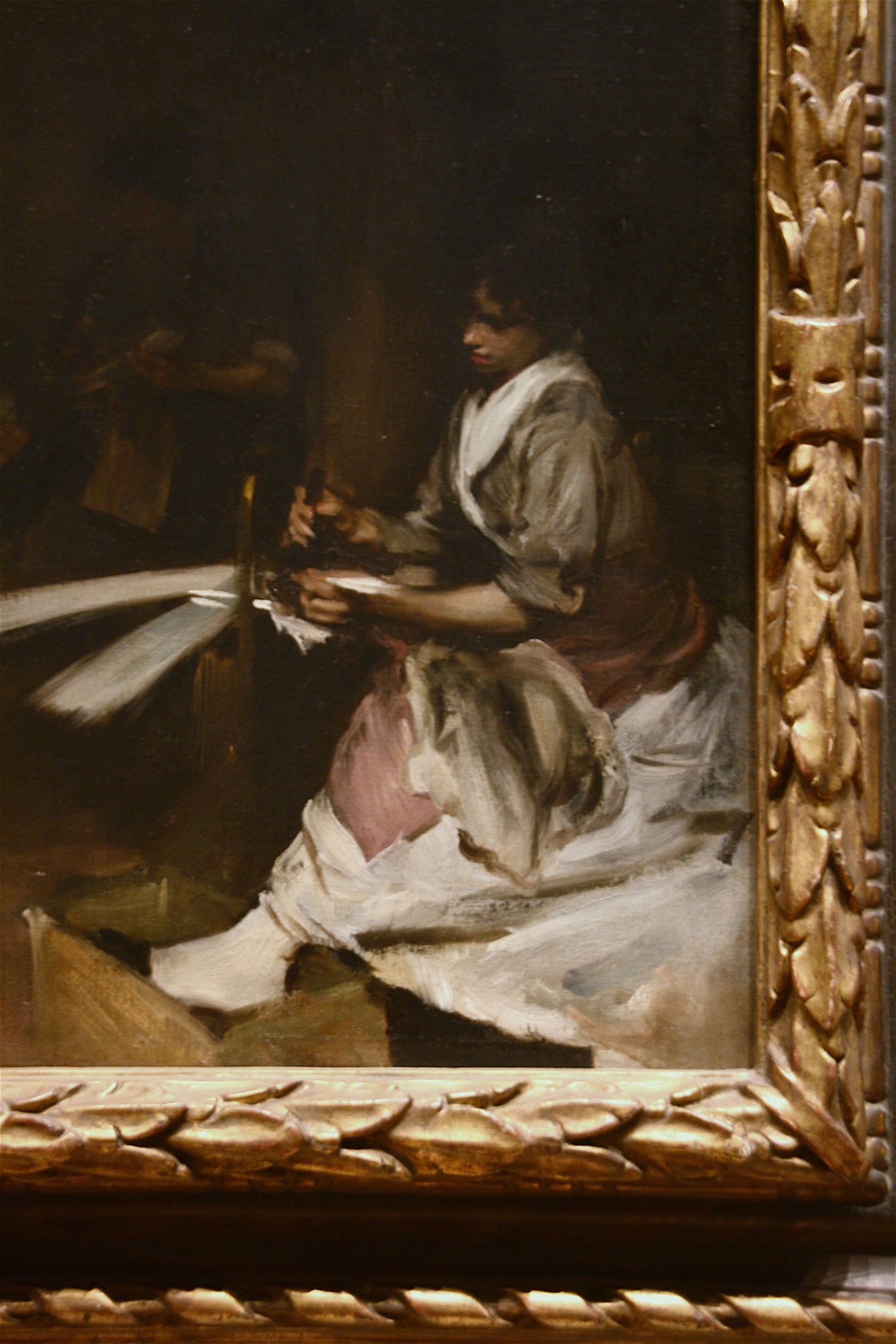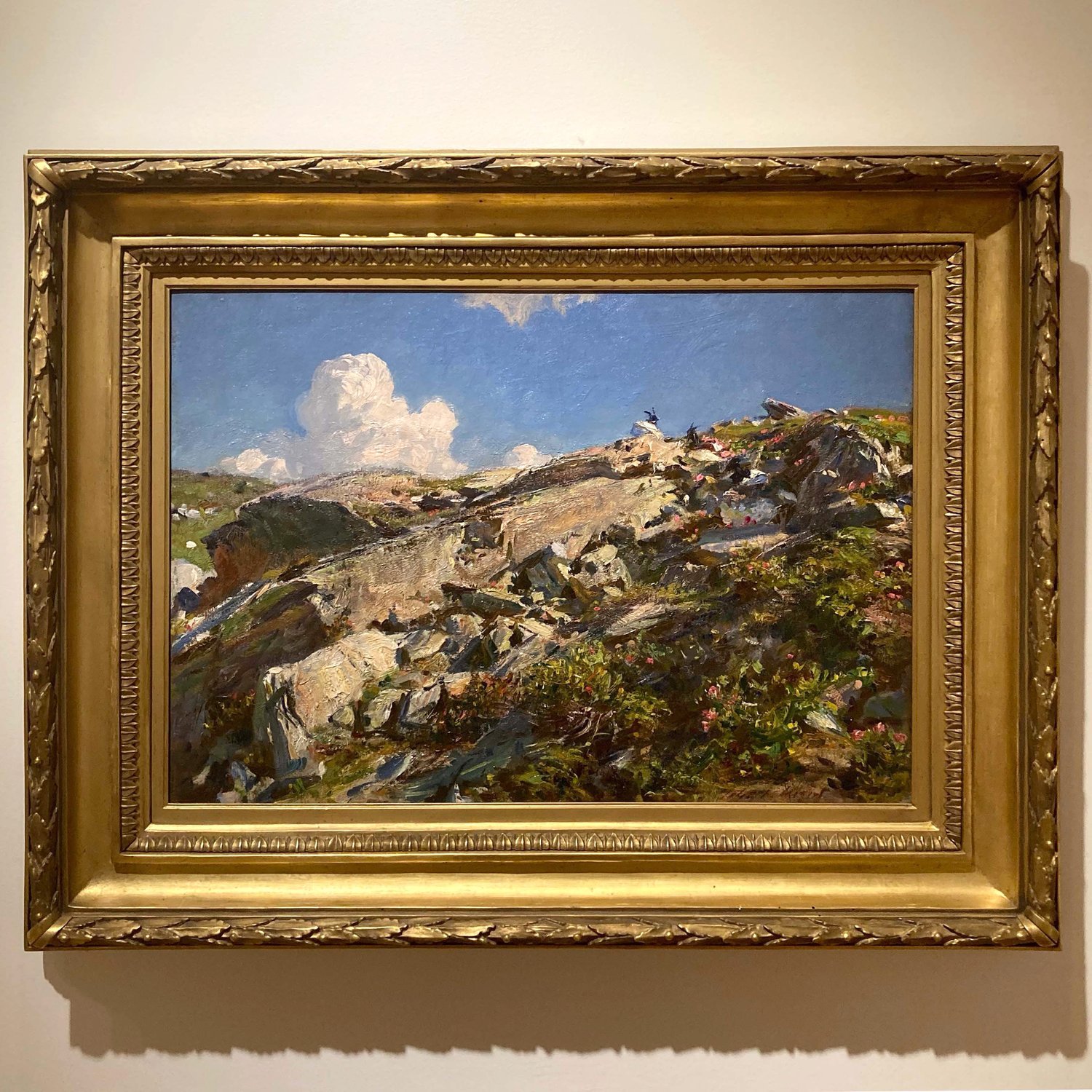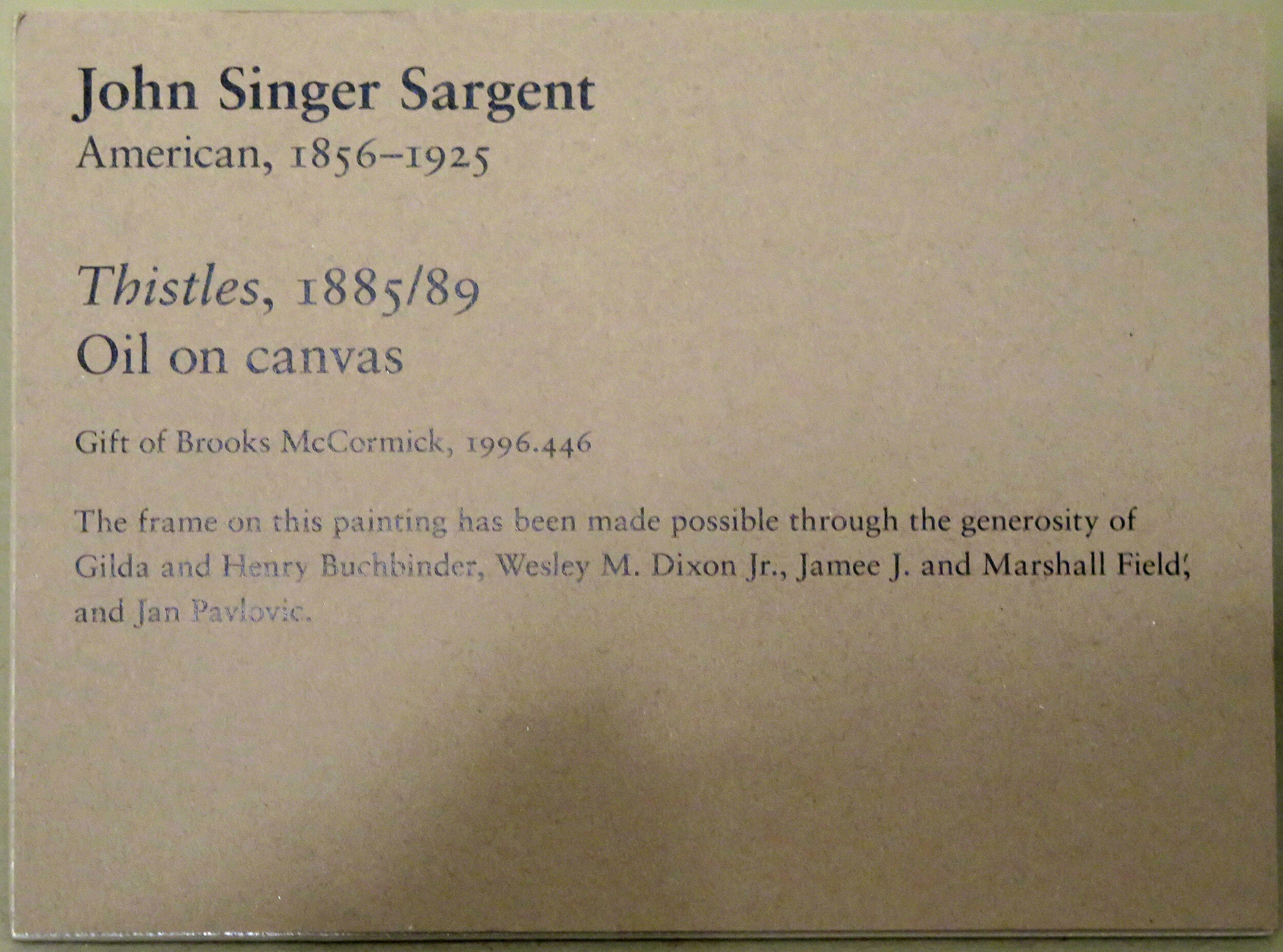
























Your Custom Text Here
Gill & Lagodich have framed and restored original frames for over two dozen paintings by John Singer Sargent for both public and private collections, including The Art Institute of Chicago, Crystal Bridges Museum of American Art, the Nelson-Atkins Museum of Art, and Sotheby's. A few finished projects are shown here.
Check back soon as we add more images.
Gill & Lagodich have framed and restored original frames for over two dozen paintings by John Singer Sargent for both public and private collections, including The Art Institute of Chicago, Crystal Bridges Museum of American Art, the Nelson-Atkins Museum of Art, and Sotheby's. A few finished projects are shown here.
Check back soon as we add more images.
JOHN SINGER SARGENT (1856 – 1925)
Robert Louis Stevenson and His Wife, 1885, oil on canvas, 20-1/4 x 24-1/4 inches, 18th-century Italian painting frame, gilded and polychrome reverse cassetta profile with extensive punched corner foliate corner decoration, molding width: 3-1/4” Framed by Gill & Lagodich for the Crystal Bridges Museum of Art.
JOHN SINGER SARGENT (1856 – 1925)
Venetian Glass Workers, 1880/82, oil on canvas, 22-1/4" x 33-1/4"; custom-made replica of a 17th-century Northern Italian painting frame; gilded and polychrome hand-carved wood; molding width 4-3/8” Framed by Gill & Lagodich for the Art Institute of Chicago. "Illuminated with swathes of light against a dark background, bundles of thin glass rods are sorted by laborers in John Singer Sargent's Venetian Glass Workers. The woman in the right foreground is using a zocco, or cutting tool, to slice glass tubes into uniform lengths that will be placed in a metal drum with a mixture of lime, carbonate, sand, carbon, and water. When the drum is heated and turned, the mixture smoothes the edges of the cut glass and forms rounded beads. In the 1880s, Sargent painted many genre scenes featuring workers. Yet this image is noteworthy for its unusual composition, in which the lightest forms are grouped along the edges, and its dramatic brushwork. The latter shows the influence of Baroque painters such as the Spaniard Diego Vélazquez and the Dutchman Franz Hals. The glass rods have become nearly abstract dashes of color, suggesting the effect of Venice's intense light as it penetrates the space. During frequent visits to Venice, Sargent completed over 100 paintings and watercolors of the city. Devoted to music and a fine pianist, Sargent traded this and another Venetian work to a piano-maker in exchange for a piano in 1886." —museum label. Mr. and Mrs. Martin A. Ryerson Collection. 1933.1917
JOHN SINGER SARGENT (1856 – 1925)
The Fountain, Villa Torlonia, Frascati, Italy, 1907, oil on canvas, 28-1/8" x 22-1/4", custom-made replica, 17th-century Italianate frame, gilded hand-carved wood with punchwork frieze. Framed by Gill & Lagodich for the Art Institute of Chicago."As one of the most sought-after and prolific portraitists of international high society, American expatriate John Singer Sargent painted the cosmopolitan world to which he belonged with elegance and a bravura touch. Born to American parents residing in Italy, Sargent spent his early adult life in Paris, moving to London in the mid-1880s. The artist traveled frequently, and it was during these trips that he experimented most extensively with painting en plein air, or outdoors. Set in a sunlit garden in the central Italian town of Frascati, this charming double portrait depicts Sargent’s friends and fellow artists Wilfrid and Jane Emmet de Glehn. The painting is filled with light, displaying Sargent’s characteristically dazzling surface articulated with thick impasto and virtuoso brushwork. Jane described the work as a “most amusing and killingly funny picture” in a letter to her sister Lydia. She continued: “I am all in white with a white painting blouse and a pale blue veil around my hat. I look rather like a pierrot, but have a rather worried expression as every painter should who isn’t a perfect fool, says Sargent. Wilfrid is in short sleeves, very idle and good for nothing, and our heads come against the great ‘panache’ of the fountain.'” — Art Institute of Chicago, Essential Guide, 2013, p. 47.
JOHN SINGER SARGENT (1856–1925)
In the Alps, 1911, oil on canvas, 20 x 28 in., 19th century Italian painting frame; gilded hand-carved wood; molding width 5-1/8 in. Framed by Gill & Lagodich for the Cummer Museum of Art & Gardens. “Although John Singer Sargent was American, he spent most of his life abroad. His artistic training encouraged rapid painting rather than the execution of countless studies , and this expressive canvas showcases Sargent’s quick brushstrokes. Painted in Simplon Pass in the Oberland Alps of Switzerland, this painting’s rocks and flowers emerge fro its thick texture. Having gained fame as a portraitist, Sargent was able to suspend new portrait commissions after 1907 and devote his time to watercolors and landscapes.” —museum permanent collection label. Painting purchased with funds from the Cummer Council. Period frame: Gift of Thomas H. and Diane DeMell Jacobsen. Here’s a link to a museum video about the painting.
JOHN SINGER SARGENT (1856–1925)
Poppies (A Study of Poppies for “Carnation, Lily, Lily, Rose”), 1886, oil on canvas, 24-3/8 x 35-7/8 inches. Framed by Gill & Lagodich for Sotheby’s New York, Period c. 1650-1700 Spanish frame, gilded and polychromed carved wood, reverse cushion profile, molding width 5” Sotheby’s New York American Art Sale 18 MAY 2016 Estimate 4,000,000 — 6,000,000 USD / LOT SOLD. 6,858,000 USD